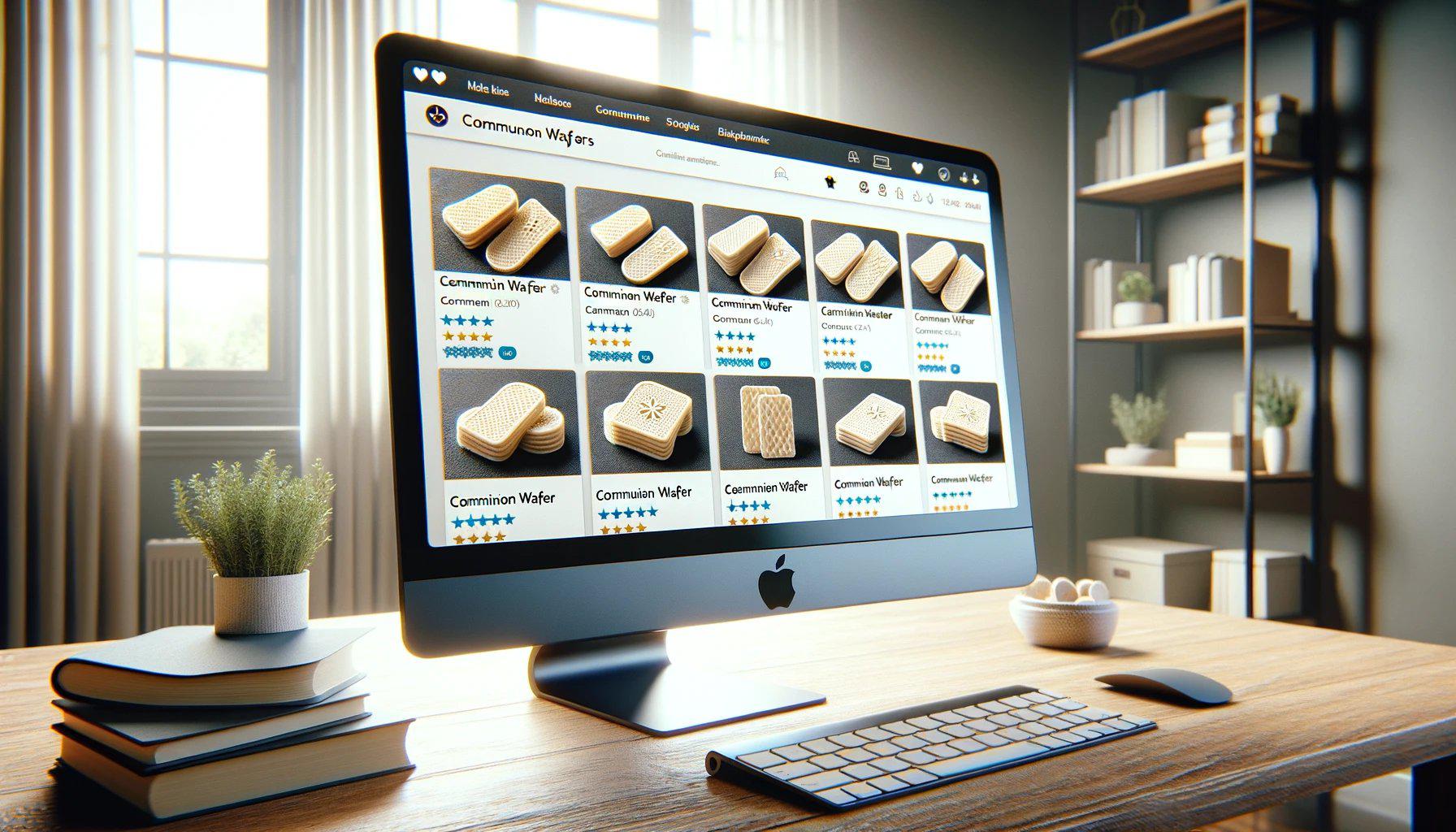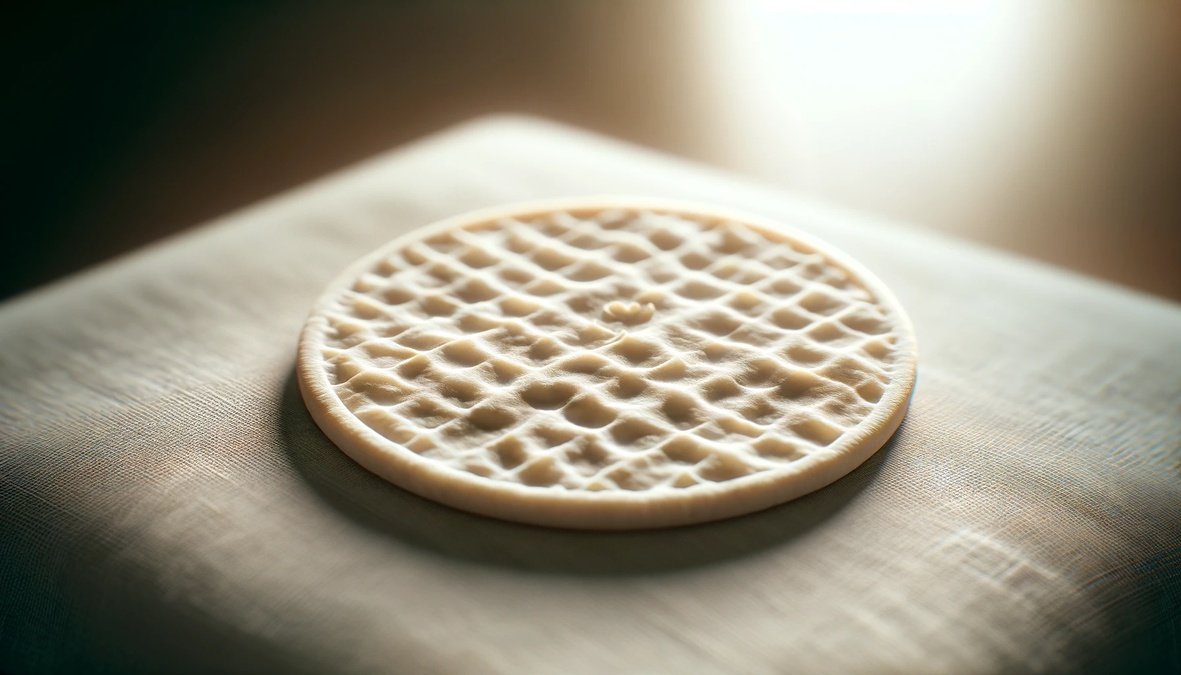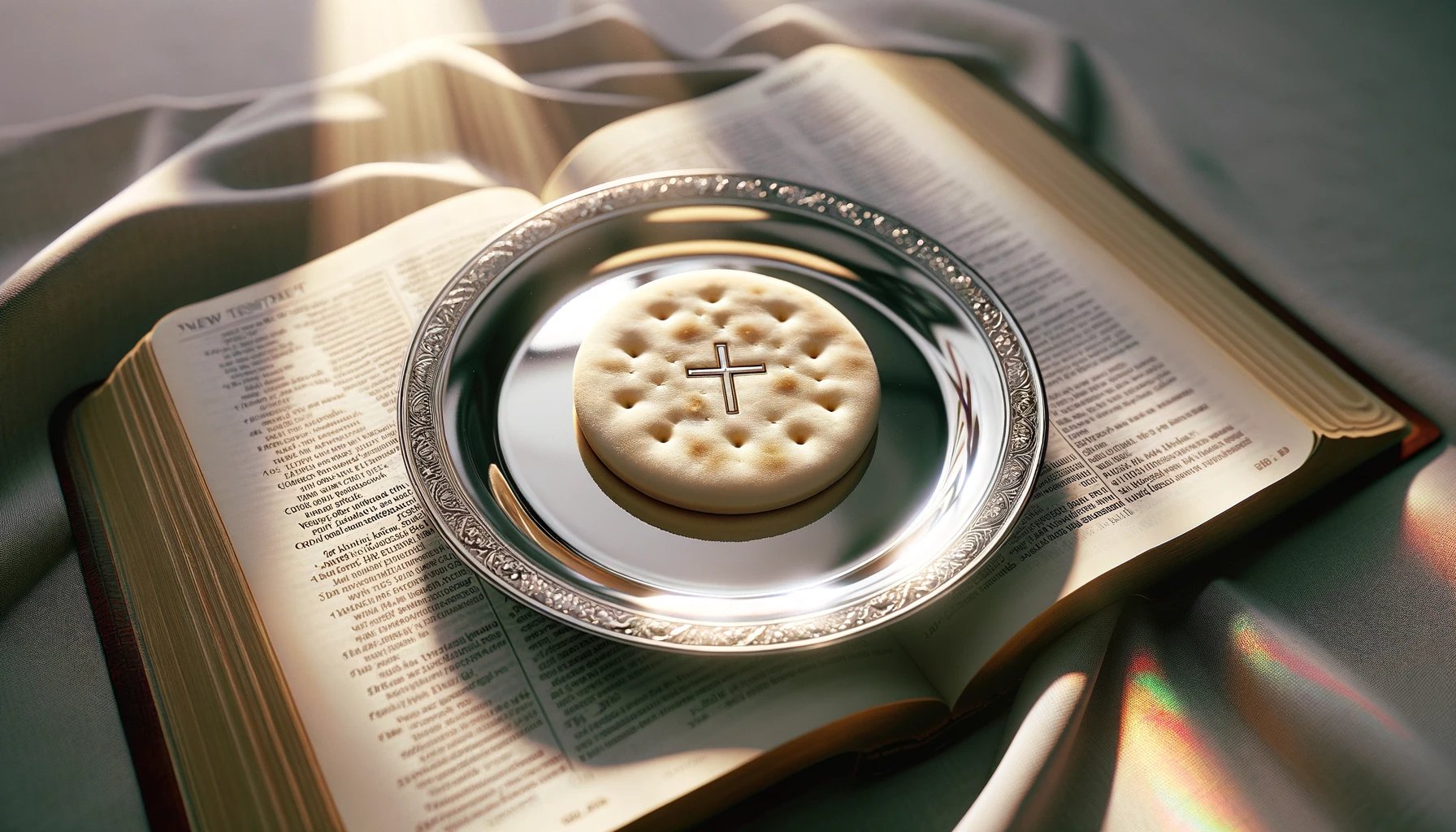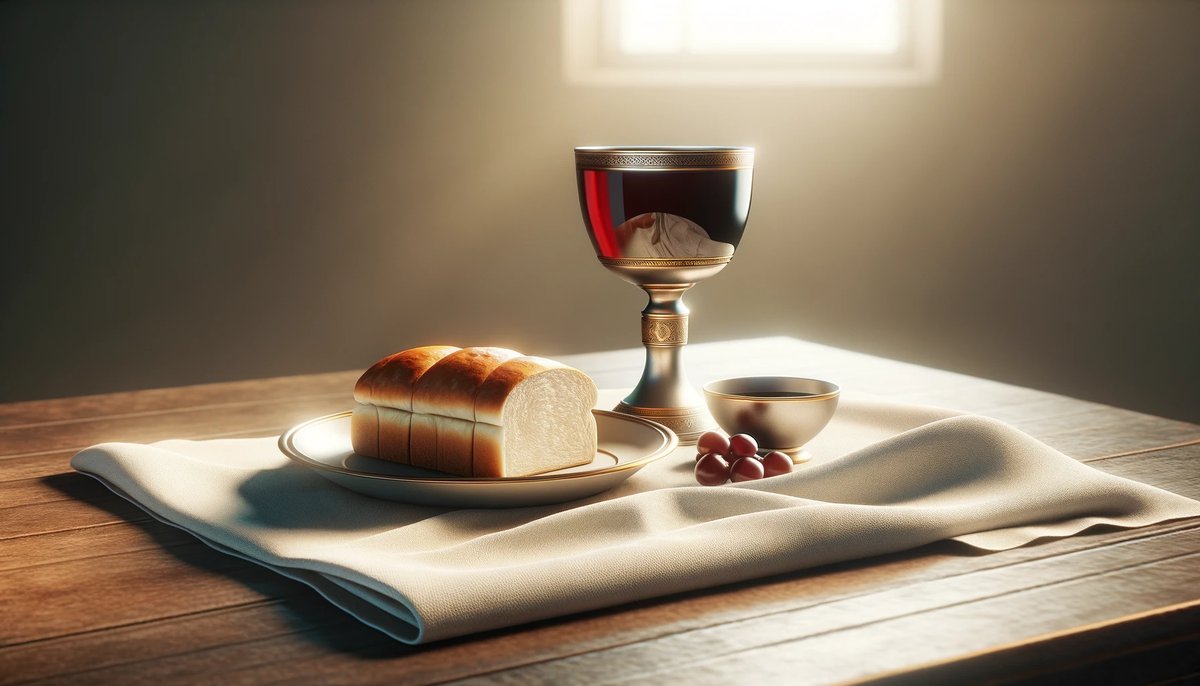Home>Theology and Spirituality>How To Make A Gluten-Free Communion Wafer
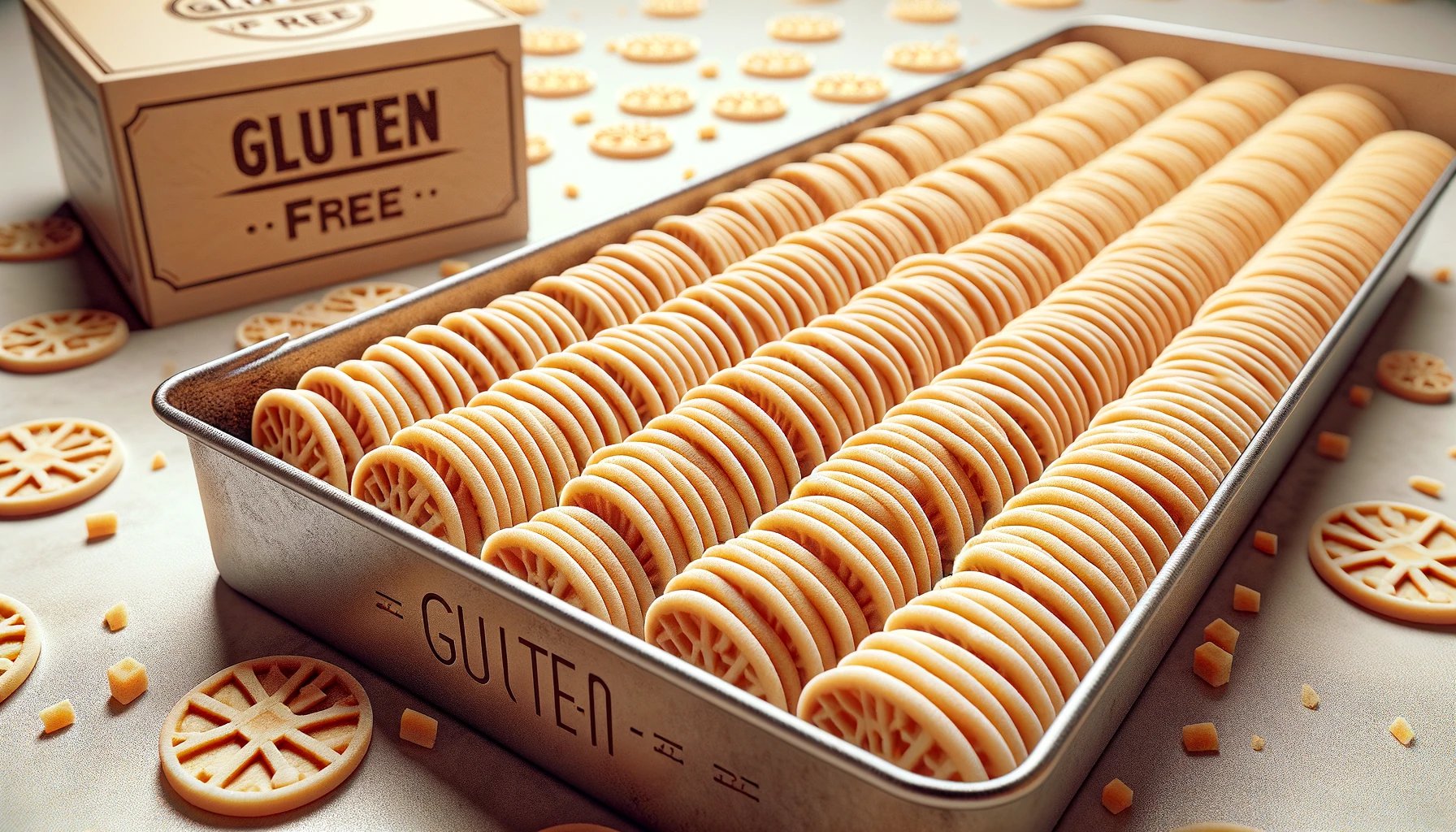

Theology and Spirituality
How To Make A Gluten-Free Communion Wafer
Published: February 19, 2024
Ericka Andersen, an editor at Christian.net, expertly merges digital strategy with content creation, focusing on faith and societal issues. Her communication skills enhance the platform's engaging narratives, fostering meaningful dialogue on belief's impact on society.
Learn how to make gluten-free communion wafers for a meaningful and inclusive worship experience. Discover a simple and thoughtful recipe for your theology and spirituality needs.
(Many of the links in this article redirect to a specific reviewed product. Your purchase of these products through affiliate links helps to generate commission for Christian.net, at no extra cost. Learn more)
Table of Contents
Introduction
Gluten-free communion wafers offer a meaningful solution for individuals with gluten sensitivities or celiac disease, ensuring that they can fully participate in the sacred act of communion without compromising their health. The significance of the communion wafer lies in its representation of the body of Christ, making it a central element of the Eucharistic celebration in many Christian traditions. However, for those with gluten intolerances, the traditional wheat-based communion wafers can pose a significant challenge.
In recent years, there has been a growing awareness of the need for inclusive practices within religious communities, prompting a shift towards accommodating individuals with dietary restrictions. This has led to an increased demand for gluten-free communion wafers, prompting many churches and religious organizations to seek out suitable alternatives that align with their beliefs and practices.
Crafting gluten-free communion wafers involves a delicate balance of culinary expertise and spiritual significance. It represents a harmonious fusion of tradition and modernity, where the timeless ritual of communion is adapted to meet the diverse needs of the faithful. By embracing the art of creating gluten-free communion wafers, religious communities can extend a warm embrace to those who may have previously felt excluded from this sacred sacrament.
In the following sections, we will delve into the intricacies of gluten-free ingredients, providing insights into the diverse options available for crafting communion wafers that are both safe and spiritually meaningful. Additionally, we will explore a detailed recipe for creating gluten-free communion wafers, accompanied by comprehensive baking instructions, and guidance on storing and serving these sacred elements. Through this exploration, we aim to empower religious communities to embrace inclusivity and ensure that all individuals can partake in the communion experience with reverence and joy.
Read more: How To Make A Communion Wafer
Understanding Gluten-Free Ingredients
Creating gluten-free communion wafers requires a deep understanding of alternative ingredients that can replace traditional wheat flour while upholding the sacred significance of the communion ritual. When embarking on the journey of crafting gluten-free communion wafers, it is essential to explore a diverse array of gluten-free ingredients that not only meet dietary restrictions but also preserve the symbolic essence of the Eucharistic celebration.
Alternative Flours
One of the key components in crafting gluten-free communion wafers is the selection of alternative flours. Rice flour, derived from finely milled rice, is a popular choice due to its neutral flavor and fine texture, which closely resembles traditional wheat flour. Additionally, almond flour, made from ground almonds, offers a rich, nutty flavor that can impart a unique depth to the communion wafers. Tapioca flour, derived from the cassava root, contributes to the desired crispness and lightness of the wafers, enhancing their texture and mouthfeel.
Binding Agents
In the absence of gluten, which provides elasticity and structure in traditional wheat-based products, gluten-free communion wafers rely on binding agents to achieve the desired consistency. Xanthan gum, a common additive in gluten-free baking, serves as an effective binding agent, imparting elasticity and stability to the dough. Alternatively, guar gum, derived from guar beans, can also be utilized to enhance the cohesiveness of the ingredients, ensuring that the communion wafers maintain their integrity during the baking process.
Flavor Enhancers
To elevate the sensory experience of gluten-free communion wafers, it is essential to incorporate flavor enhancers that complement the sacred nature of the ritual. Pure vanilla extract, renowned for its aromatic richness, can infuse the wafers with a subtle sweetness, adding a layer of depth to the communion experience. Additionally, a touch of honey or agave syrup can impart a delicate sweetness, harmonizing with the spiritual significance of the communion wafers.
Read more: Who Makes The Communion Wafers
Symbolic Significance
While navigating the realm of gluten-free ingredients, it is crucial to consider the symbolic significance of the communion wafers within the context of religious traditions. Each ingredient chosen should not only align with dietary requirements but also resonate with the spiritual essence of the Eucharistic celebration, ensuring that the communion wafers remain a poignant symbol of unity and reverence.
By delving into the realm of gluten-free ingredients and their profound implications for the communion experience, religious communities can embark on a transformative journey towards inclusivity and spiritual enrichment. This understanding serves as the cornerstone for crafting gluten-free communion wafers that honor both the dietary needs and the sacred traditions of the faithful.
Recipe for Gluten-Free Communion Wafers
Crafting gluten-free communion wafers involves a meticulous fusion of ingredients and spiritual reverence, ensuring that each element embodies the sacred significance of the Eucharistic celebration. The following recipe offers a thoughtful approach to creating gluten-free communion wafers that are both nourishing and spiritually meaningful.
Ingredients:
- 1 cup rice flour
- 1/4 cup almond flour
- 1/4 cup tapioca flour
- 1/2 teaspoon xanthan gum
- 1/4 teaspoon salt
- 1/4 cup unsalted butter, softened
- 1/4 cup pure honey or agave syrup
- 1 teaspoon pure vanilla extract
- 1/4 cup warm water
Instructions:
-
In a mixing bowl, combine the rice flour, almond flour, tapioca flour, xanthan gum, and salt. Whisk the dry ingredients together, ensuring even distribution.
-
Add the softened butter to the dry mixture, using a pastry cutter or fork to incorporate the butter until the mixture resembles coarse crumbs.
-
Drizzle the honey or agave syrup over the crumbly mixture, followed by the pure vanilla extract. Gently blend the ingredients together, allowing the sweet aroma of the vanilla to infuse the dough.
-
Gradually add the warm water to the dough, kneading it gently until a smooth, pliable consistency is achieved. The dough should hold together without being overly sticky.
-
Preheat the oven to 350°F (175°C) and line a baking sheet with parchment paper.
-
On a clean, lightly floured surface, roll out the dough to a thickness of approximately 1/16 inch. Using a small circular cookie cutter, carefully cut out individual communion wafers.
-
Place the cut wafers onto the prepared baking sheet, pricking each wafer with a fork to create the traditional pattern of small holes.
-
Bake the communion wafers for 10-12 minutes, or until they are lightly golden around the edges. Keep a close watch to prevent over-browning.
-
Once baked, remove the wafers from the oven and allow them to cool completely on a wire rack. As they cool, the wafers will achieve the desired crispness, signifying their readiness for sacred use.
-
Store the gluten-free communion wafers in an airtight container at room temperature, ensuring that they are handled with utmost care and reverence until they are served during the Eucharistic celebration.
By following this meticulous recipe, religious communities can create gluten-free communion wafers that honor the sacred traditions of the Eucharist while embracing inclusivity and compassion for individuals with dietary sensitivities. Each step in the process reflects a harmonious blend of culinary artistry and spiritual devotion, culminating in communion wafers that symbolize unity and nourishment for all who partake in the sacred ritual.
Read more: What Is Communion Wafer
Baking Instructions
-
Preheat the oven to 350°F (175°C) and line a baking sheet with parchment paper.
-
On a clean, lightly floured surface, roll out the dough to a thickness of approximately 1/16 inch. Using a small circular cookie cutter, carefully cut out individual communion wafers.
-
Place the cut wafers onto the prepared baking sheet, pricking each wafer with a fork to create the traditional pattern of small holes.
-
Bake the communion wafers for 10-12 minutes, or until they are lightly golden around the edges. Keep a close watch to prevent over-browning.
-
Once baked, remove the wafers from the oven and allow them to cool completely on a wire rack. As they cool, the wafers will achieve the desired crispness, signifying their readiness for sacred use.
-
Store the gluten-free communion wafers in an airtight container at room temperature, ensuring that they are handled with utmost care and reverence until they are served during the Eucharistic celebration.
Baking the gluten-free communion wafers is a delicate and sacred process that requires precision and mindfulness. The act of preheating the oven serves as a symbolic preparation, akin to the spiritual readiness required for the Eucharistic celebration. As the oven reaches the specified temperature, it mirrors the warmth and sanctity of the communal gathering, setting the stage for the transformative baking ritual.
Once the dough is delicately rolled out to the prescribed thickness, each individual wafer is carefully cut out, signifying the unique and cherished presence of every participant in the communion experience. The use of a small circular cookie cutter represents the unifying circle of faith, while the traditional pattern of small holes, created by pricking each wafer with a fork, symbolizes the interconnectedness of the faithful within the divine tapestry of the Eucharist.
As the communion wafers undergo the process of baking, the gentle heat envelops them, infusing the air with a sense of anticipation and reverence. The golden hue that adorns the edges of the wafers signifies the divine radiance that emanates from the sacred act of communion, illuminating the hearts and spirits of all who partake in the ritual.
Upon completion of the baking process, the communion wafers are allowed to cool on a wire rack, symbolizing a period of reflection and spiritual contemplation. As they transition from warmth to coolness, the wafers embody the transformative journey of the faithful, embracing the sacred balance between fervent devotion and tranquil introspection.
Finally, the gluten-free communion wafers are stored in an airtight container, safeguarding their purity and sanctity until they are presented during the Eucharistic celebration. This act of preservation mirrors the enduring grace and reverence bestowed upon the faithful, ensuring that the communion wafers remain a source of spiritual nourishment and inclusivity for all who partake in the sacred communion experience.
Storing and Serving Gluten-Free Communion Wafers
After the meticulous process of crafting and baking gluten-free communion wafers, it is essential to consider the proper methods for storing and serving these sacred elements. The act of storing and serving the communion wafers is imbued with profound symbolism, reflecting the reverence and inclusivity that underpin the Eucharistic celebration.
Storing Gluten-Free Communion Wafers
Upon completion of the baking process, the gluten-free communion wafers should be stored with utmost care and reverence, ensuring that they remain pristine and spiritually significant until they are served during the Eucharistic celebration. To preserve the purity and integrity of the wafers, it is recommended to store them in an airtight container at room temperature. This safeguarding of the communion wafers mirrors the enduring grace and reverence bestowed upon the faithful, symbolizing the unwavering commitment to inclusivity and spiritual nourishment for all who partake in the sacred communion experience.
Serving Gluten-Free Communion Wafers
The act of serving gluten-free communion wafers is a poignant moment that encapsulates the spirit of unity and compassion within the Eucharistic celebration. Each communion wafer is presented with profound reverence, signifying the sacred bond that unites the faithful in their shared spiritual journey. When serving the gluten-free communion wafers, it is essential to handle them with care and mindfulness, ensuring that each individual receives the symbolic embodiment of spiritual nourishment and inclusivity.
As the gluten-free communion wafers are distributed during the Eucharistic celebration, they serve as a tangible expression of unity and compassion, transcending dietary restrictions and embracing the diverse needs of the faithful. The act of serving the communion wafers becomes a transformative gesture, fostering a sense of belonging and spiritual fulfillment for all who partake in the sacred ritual.
In essence, the storage and serving of gluten-free communion wafers encapsulate the profound commitment to inclusivity and spiritual nourishment within religious communities. By upholding the sanctity of the communion wafers through mindful storage and reverent service, religious communities demonstrate a steadfast dedication to embracing the diverse needs of the faithful, ensuring that the Eucharistic celebration remains a source of unity, compassion, and spiritual enrichment for all.
Read more: What Is The Wafer Of Communion Made From
Conclusion
In the realm of religious practice, the act of communion holds profound significance, serving as a sacred ritual that unites the faithful in spiritual nourishment and communal bond. The introduction of gluten-free communion wafers represents a pivotal step towards inclusivity, ensuring that individuals with dietary sensitivities can partake in the Eucharistic celebration without compromise. The journey of crafting gluten-free communion wafers transcends the realm of culinary artistry, intertwining with the spiritual essence of the communion ritual to create a harmonious union of tradition and compassion.
Through a deep understanding of gluten-free ingredients, religious communities can embark on a transformative path towards inclusivity and empathy. The selection of alternative flours, binding agents, and flavor enhancers reflects a thoughtful approach to crafting communion wafers that honor both dietary needs and the sacred traditions of the Eucharist. Each ingredient chosen serves as a testament to the unwavering commitment to inclusivity, ensuring that the communion wafers remain a poignant symbol of unity and reverence for all who partake in the sacred ritual.
The meticulous recipe for creating gluten-free communion wafers embodies a fusion of culinary expertise and spiritual reverence, guiding religious communities towards the art of crafting wafers that are both nourishing and spiritually meaningful. The baking instructions, infused with symbolic significance, mirror the transformative journey of the faithful, culminating in communion wafers that symbolize unity and nourishment for all who partake in the sacred ritual.
The act of storing and serving gluten-free communion wafers encapsulates the profound commitment to inclusivity and spiritual nourishment within religious communities. By upholding the sanctity of the communion wafers through mindful storage and reverent service, religious communities demonstrate a steadfast dedication to embracing the diverse needs of the faithful, ensuring that the Eucharistic celebration remains a source of unity, compassion, and spiritual enrichment for all.
In essence, the introduction of gluten-free communion wafers heralds a new chapter in the narrative of inclusivity within religious traditions. It embodies the spirit of compassion, unity, and unwavering devotion to ensuring that all individuals, regardless of dietary restrictions, can partake in the sacred act of communion with reverence and joy. As religious communities embrace the art of crafting gluten-free communion wafers, they pave the way for a more inclusive and spiritually enriching communion experience, where the sacred bond of unity transcends all boundaries, fostering a sense of belonging and spiritual fulfillment for all who gather at the communal table of faith.
